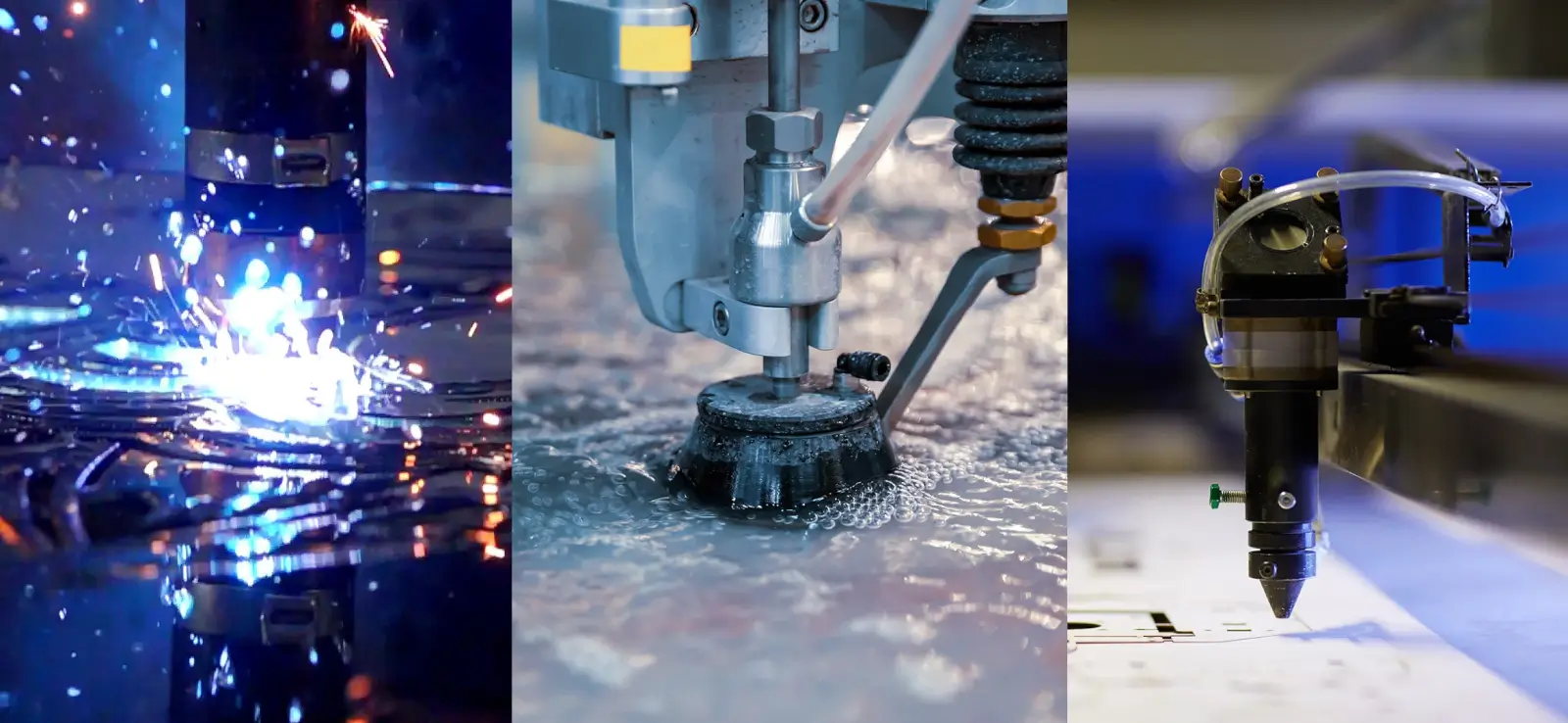The Study On Rapid Manufacturing Methods
In the modern manufacturing landscape, demand for precision, speed, and efficiency has never been higher. As industries strive to stay competitive, high-speed manufacturing techniques are leading of innovation. These techniques include, industrial cutting methods such as laser and waterjet cutting techniques have gained significant attention due to their capability to deliver exceptional results with minimal waste.
Laser cutting employs focused beams of light to slice through materials with remarkable accuracy, making it ideal for complex designs and intricate patterns. On the other hand, waterjet cutting utilizes high-pressure streams of water, often mixed with abrasive materials, to cut through even the hardest substances without producing heat. Both methods not only enhance production speed and broaden the range of materials that manufacturers can utilize, paving the way for new possibilities in design and application.
Introduction of Laser Cutting Methods
Laser cutting technology has changed the way manufacturing is conducted in manufacturing. By utilizing highly concentrated beams of light, laser cutters can slice through a variety of materials with notable precision. This method allows for complex designs and sophisticated shapes that conventional methods may struggle to create. As companies aim to improve production efficiency, laser cutting is distinguished for its speed and flexibility, making it a popular choice across various sectors.
One of the main pros of laser cutting is its ability to function with a wide range of materials, including metallic substances, plastics, timber, and clay products. The technology functions by aiming a narrowed laser beam onto the material, which burns or evaporates the undesired sections. Unlike manual cutters, which can create stresses and irregularities in the material, laser cutting creates clean edges and minimal thermal distortion. This aspect is particularly advantageous for applications requiring high-quality finishes and narrow tolerances.
Moreover, advancements in laser technology continue to enhance its capabilities. Powerful laser systems equipped with advanced control systems can penetrate denser substances at increased speeds, significantly increasing productivity. Moreover, the integration of Computer Numerical Control (CNC) systems enables automation, lowering the need for manual intervention and reducing human error. As such, laser cutting technology not only improves manufacturing processes but also provides a green approach by lessening waste and energy consumption.

Benefits of Waterjet Cutting
Abrasive Waterjet cutting offers a notable level of flexibility in fabrication processes. It can effectively cut through a wide range of substances, including metals, ceramic composites, transparent materials, and mixed materials, without altering the physical properties. This feature makes it an perfect choice for fields that require precision and versatility in their cutting operations, allowing manufacturers to work on diverse projects with ease.
Another significant merit of waterjet cutting is the minimal heat-affected zone it creates during the cutting process. Unlike traditional cutting methods that generate high temperatures, waterjet cutting uses a high-pressure of water mixed with an abrasive substance. laser and waterjet cutting service ensures that the structure of the material is maintained, preventing warping or changes in the micro-structure, which is especially critical when working with heat-sensitive materials.
Furthermore, water jet cutting is an environmentally friendly option in production. It produces no harmful gases or waste, as the cutting process primarily uses water and grinding agents. This environmental consideration aligns well with modern industrial standards, where environmental responsibility is increasingly emphasized. By opting for waterjet cutting, manufacturers can enhance their fabrication efficiency while also being more aware of their environmental impact.
Applications in Current Production
Optical and water jet cutting solutions have become crucial to multiple industries due to their precision and effectiveness. In the automotive sector, these methods allow for the intricate cutting of metallic components, making sure that parts fit together seamlessly and enhance overall vehicle efficiency. The capability to produce intricate shapes rapidly has transformed how manufacturers design and produce automotive parts, considerably reducing lead times and waste.
In the aviation industry, where every unit of weight counts, laser cutting is used to create lightweight yet strong components. The technology's precision allows manufacturers to create parts with little material loss, which is essential for upholding the strict safety and operational standards required in aviation. Waterjet cutting is also employed here, as it can process various materials, including composites and metals, without jeopardizing structural integrity.
Furthermore, the healthcare equipment industry has adopted these cutting techniques for the creation of exact instruments and implants. The careful nature of laser cutting ensures that delicate and complex designs meet the stringent level of cleanliness and performance needed in the medical field. Waterjet cutting supplements this by allowing for the use of a range of biocompatible materials, promoting innovation in medical technology while maintaining patient well-being.